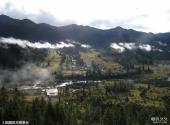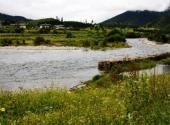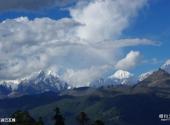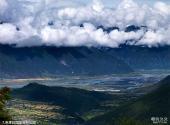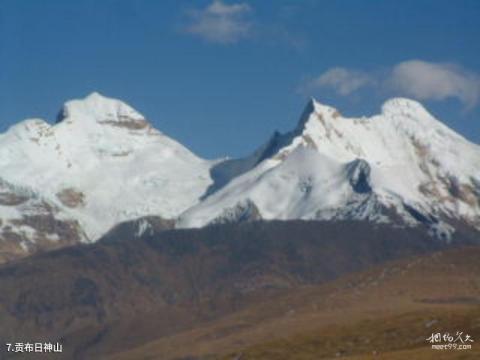
Scenic spot introduction:
Lulang Forest It is a typical narrow strip of plateau mountain meadow. On both sides of the green mountains, from low to high, there are bushes and dense spruce and pine trees respectively. In the middle is a neat meadow with winding streams. On the lawn, there are thousands of wild flowers in full bloom, such as primroses, asters, plum blossoms, and pedicularia. The wooden fences, plank houses, wooden bridges and farmers' and herdsmen's villages with forest characteristics are scattered in an orderly manner, outlining a tranquil and beautiful "mountain dwelling picture". It enjoys the reputation of "Jiangnan of Tibet".Attractions distribution:
Lulang Forest Located in the deep mountains and old forests about 80 kilometers away from Bayi Town, Lulang means "Dragon King Valley" and "the place where immortals live" in Tibetan. The scenic area is 3,700 meters above sea level. There are green mountains and rivers in the area. There are huge, green and lush primeval forests all year round, and rhododendrons all over the mountains. It is known as a "natural oxygen bar" and a "biological gene bank".Scenic spot qualifications:
National 4A-level scenic spotScenic spot features:
Photography, sightseeing, leisure, vacation, ethnic tourism, cultural tourism, meadowTravel Notes of Travellers:
- Tiedan: Mission Operation 2010 (Part 2) ~ Travel Notes on the Sichuan-Tibet Line
- Travel Guide: Tibet Hiking and Self-Driving Travel Guide 2017
travelling guideline:
Eat: Lulang Stone Pot Chicken. The pot is hollowed out from a whole piece of stone, and the chicken is native chicken raised by local Tibetans. It is slowly stewed with stream water flowing down from the snow-capped mountains and combined with medicinal herbs such as ginseng, Tibetan Fritillary, lily, and wolfberry. It is absolutely a delicacy that you must try.
Dongjiu Forest Town is located next to National Highway 318. Lulang Forest The most prosperous core area. Tourists usually eat and stay here.
Tour route:
Sejila National Forest Park→ Lulang Forest (Observation deck, view Nanga Parbat, sunrise, forest) → Pastoral scenery (Observation deck, view sea of clouds, sea of flowers, pastoral pasture) → Gongcuo Tourist Service Center parking lot → Suspension bridge → Gongcuo, pagoda ruins → Pastoral scenery → Zhaxigang Folk Village (visiting the homes of the Tibetans in Gongbu, Lulang stone pot chicken specialties with singing and dancing in the performance hall) → Prayer flags , the legend of carrying stones, Cyclobalanopsis glauca forest (temple ruins) → alpine pastures, Tusi ruins, etc. → Qingban Tourist Service Center parking lot.
Note: The above tour route can also be taken in reverse.
Best time to visit:
July to mid-September every year, Lulang Forest It is the best time to visit when the area is lush, green, and full of wildflowers.
Shopping recommendations:
The local specialties such as palm ginseng, matsutake, cloninghodon, boletus and pine mushrooms are all good choices. The price of mushrooms varies with the season and they can generally be bought in small shops on both sides of Lulang Street.
If you want to buy a stone pot and cook your own stone pot chicken at home, you need to make an appointment in advance with the local stone pot master. The price is between 1,500 and 2,000 yuan.
Scenic spot location:
China > Tibet Autonomous Region > Nyingchi City > Bayi District
How to get there:
The round-trip distance from Lhasa to Bomi is nearly 1,000 kilometers. It costs about 2,000 yuan to charter a car from Lhasa for three days. By the way, you can also visit many scenic spots in Nyingchi. There are shuttle buses from Bomi to Nyingchi every day, which depart before 10 am every day and the fare is 80 yuan.
Scenic area map:
Click to expand the scenic area map
Lulang Forest Sea Ticket Price:
Sejila National Forest Park Ticket price: 30 yuan/person
Scenic area opening hours:
8:30-17:30

